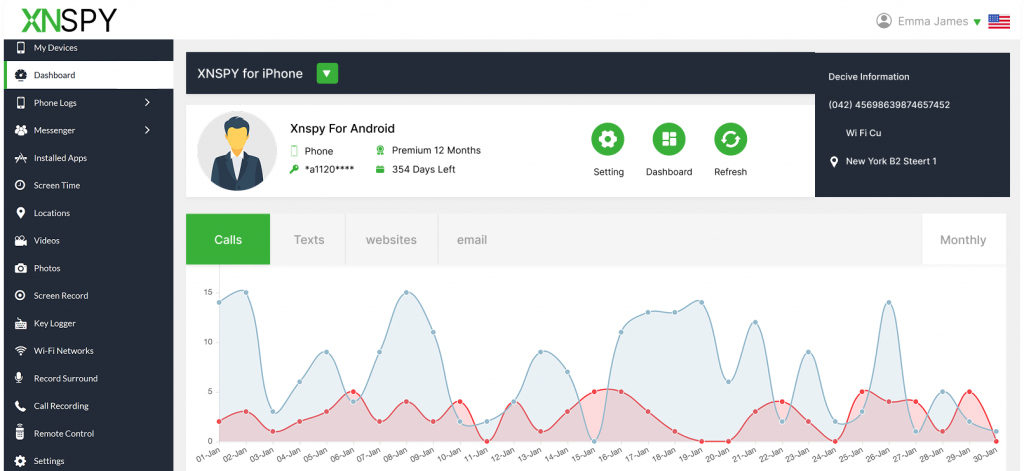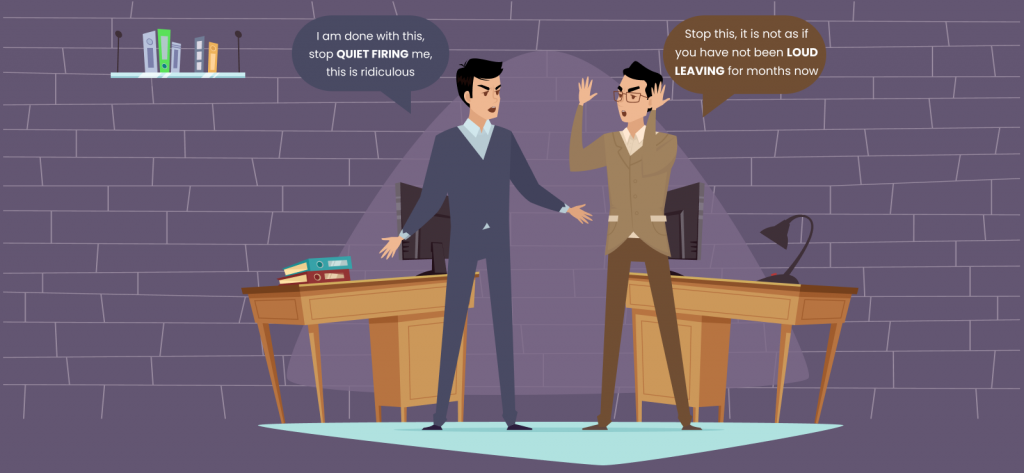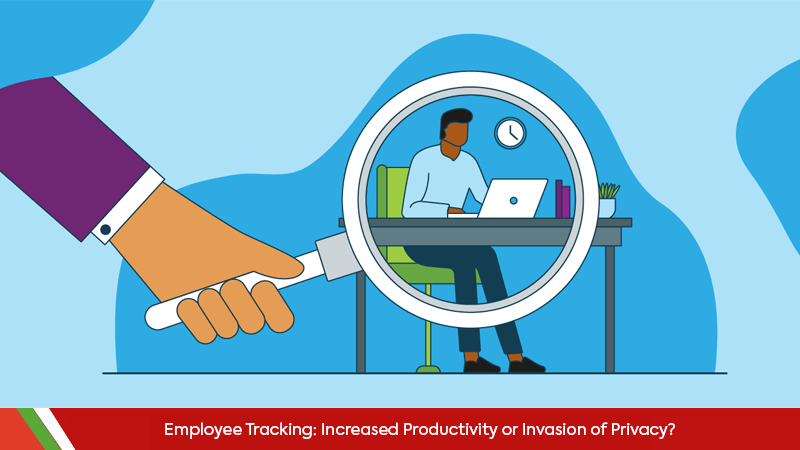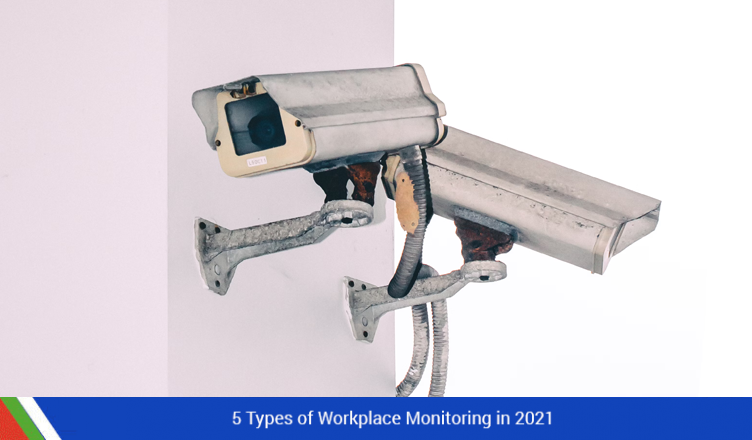The complete monitoring experience for your phone
Get XNSPY and start tracking calls, texts, multimedia, locations and more on any phone!
Get Started Now Live DemoBowed down heads, vacant eyes, and long-dead excitement. What should be a scene right out of a horror movie is now the norm in the corporate world.
The silence you are often met with in offices is so deafening that you are pushed to ask a fundamental question: “Are the employees even present here mentally?”
Well, that depends on the clues they leave in their wake. If they are refusing to work late or are downright saying “no” to anything beyond their official responsibilities, they might be completely checked out.
In fancier terms, this is called quiet quitting. Now, is it a good shift in workplace culture or not? This article will help you decide. Continue reading to understand quiet quitting, its reasons, signs, and preventive measures.
Shedding Light on Quiet Quitting Meaning
Quiet quitting is when employees do the bare minimum required in their jobs instead of going above and beyond. They are still doing what is in their job description, but they stop taking on extra tasks or emotionally investing in their work.
Commonly, it is explained as a boundary-setting strategy used by people to protect their personal time and sanity when jobs demand too much.
Add These Blogs to Your List
💬 15 WhatsApp Scams You Didn’t Know About + How to Prevent Them
📱 What Happened to Omegle: The Rise and Fall of the Chat Platform
💑 Is Telegram Used for Dating? Here’s What Happens
💣 17+ Dangerous Social Media Challenges: Exposing the Dark Side
The Unclear Origin of the Quiet Quitting Trend and Its Goals
Is quiet quitting something real or made up? Let’s see where the term came from and how it has become a part of the present work culture.
While the exact origins of the term are unclear, the idea itself was popularized in 2022 on various social media platforms. At first sight, people were seen comparing the concept to China’s earlier “lying flat” movement and started using quiet quitting to describe pulling back to core duties.
On TikTok and LinkedIn, employees found a hashtag (#QuietQuitting) to voice a shared frustration: “I’ll meet you halfway, but I won’t run myself into the ground.” Suddenly, a lot of workers saw themselves in the concept.
With time, the quiet quitting trend translated into a concept that compelled employees to refuse to do unpaid overtime or extra tasks. But till this point, quiet quitting was still not widely acknowledged. The corporation viewed it as a far-fetched notion that would eventually die down.
Then came a career coach’s video that exploded conversations about quiet quitting and brought the term into the public’s view. With the term going viral and people showcasing admiration towards it, experts and news outlets stepped in for broader discussions.
Field experts were seen talking about what quiet quitting entails and whether it is a smart strategy or something that will eventually end in bigger problems.
But for people, it was different. The term, for them, summed up frustration around decades of unrealistic demands and nonstop availability. People were exhausted, and reasonably enough, they saw quiet quitting as an out.
You need to, however, remember that even though the concept was new, the feelings it described were not. Long before, people had been quietly quitting tiresome jobs, only now, they had a name to describe what they were doing.
How Covid-19 Acted as an Instigator of Quiet Quitting

We have now established that the concept of quiet quitting existed long before it gained traction. But what really convinced people to draw firmer lines? Covid-19. When the pandemic hit, many were forced to the confines of their homes, and with them, their work too shifted to home offices overnight.
The result of a seemingly simple change in the work environment? There were no defined office hours, and employees used to find themselves working after office hours and even on weekends.
By the time Covid-19 ended, employees had had enough of the unrealistic standards they were trying to meet. Not only that, but they had also realized that there was no need for them to be chained to their desk at all times to get the work done.
Therefore, with the taste of flexibility in mind and the exhaustion in their body, they decided to create clearer boundaries around their work responsibilities.
Another aspect that caused this shift was the insight into how fragile life really is. Being surrounded by death for so long gave people the courage to not only prioritize themselves but also their families.
Gen Z Quiet Quitting: How Different Generations View It
Quiet quitting means different things to different demographics. For starters, Gen Z grew up with smartphones and early exposure to work culture on social media. Plus, many entered the workforce right after the pandemic.
Therefore, for Gen Z, work is a tool to live the life they want, not the center of their identity. For this very reason, you will often hear them say, “Work is a means to an end.”
Millennials, on the other hand, can sympathize. They remember when saying yes to every extra project was the only way up. After years of hustle culture with little reward, many are now craving balance.
A millennial who spent their 20s working weekends may now wonder if it is worth sacrificing family or health. Quiet quitting can feel like catching up on life after overworking yourself.
On the other hand, Gen X and Baby Boomers often find it bewildering. These generations grew up on ideals of loyalty, like show up early, stay late, and you will succeed. They may see quiet quitting as shortcuts.
“Without going the extra mile, how will you ever get ahead?” some older workers argue. They also worry about job security in uncertain times. These generational divides reflect broader changes in work values.
Surveys show that overall engagement is low across all ages. But how people respond to that disengagement varies. Younger workers tend to set boundaries, while older workers often push through.
Studying the Quiet Quitting Trend from a Statistical Lens
Now, we must see quiet quitting in action, not through vague notions but through factual data:
- More than half of employees, i.e., 55% respond to emails outside of work hours, which eventually leads to quiet quitting. (Source)
- 59% of employees worldwide are quiet quitting, and only 18% are loud quitting. The key demographic hit by quiet quitting is under 35 years of age. (Source)
- 50% of Americans meet the criteria of quiet quitting. Out of the 50%, only 32% are fully engaged, while 18% are actively disengaged. (Source)
- 12% of workers are not satisfied with their jobs. On the other hand, only 38% are somewhat satisfied with their job. (Source)
- The TikTok hashtag #QuietQuitting had more than 17 million views, which then resulted in serious conversations across LinkedIn. (Source)
- Since the total people in the U.S. workforce is approximately 160 million, half of them being disengaged means 80 million employees do not have the required engagement level. (Source)

Your Employees Might Give Up, But You Cannot
Catch red flags in employee behavior by monitoring with XNSPY.
Reasons that Turn Employees into Quiet Quitters

Why does quiet quitting happen, though? It was not like one day employees got up and decided, I will do only what I am paid for. Just like everything else going on in this world has an instigator, so does quiet quitting. Let’s see what reasons can turn a dedicated employee into a quiet quitter.
Desire for Fair Compensation
Employees’ motivation can wane when they constantly see a gap between their output and compensation. Therefore, with living costs rising and wages remaining the same, employees can stop putting in extra effort or working overtime.
Limited Growth Opportunities
Most employees in an organization are engaging in extra tasks and working hard because they want to grow professionally. However, if the company offers no clear pathways to promotion or fails to invest in training, the expectant employees can quickly learn their lesson and take a step back.
Burnout from Constant Overwork
Sometimes it is not all about what they are getting in return for their efforts; it can also be about constantly having to tackle a high workload. With extra responsibilities and the need for non-stop connectivity, even dedicated employees can get exhausted.
The exhaustion, then, eventually translates into a decline in enthusiasm. Therefore, to preserve their energy and mental well-being, employees can cut back to their core responsibilities.
Inflexible Work Arrangements
Rigid schedules and mandatory office days can sometimes happen to clash with personal obligations. Whether parents or family-oriented individuals, inability to enjoy remote or hybrid flexibility can make individuals pull back to doing only the required tasks.
Toxic Work Culture
Unsupportive managers dwindle employee morale more than anything else. If a manager fails to use their influence rightly, turns to favouritism, and is unreasonable, employees can stop engaging at work completely.
Not only that, but if the overall work culture in an organization is plagued with politics and unnecessary conflict, employees can also disengage as a defensive stance.
7 Subtle Signs of Quiet Quitting to Watch Out for
Now, before we switch to how to prevent quiet quitting, we have to first understand the signs that are commonly observed in employees who are quiet quitting. Below, you will find a list of all the behavioral changes you should stay on the lookout for.
- If an employee used to bring new ideas to the table every day but is now only responding with “okay” or “sure” when discussions are underway, they might be quiet quitting. These signs of diminishing enthusiasm can showcase that the person is losing their sense of purpose.
- The employee is no longer interested in promotions and skill development. Therefore, they decline any opportunities that come their way.
- Slow replies and a lack of responsiveness to emails can signal reduced communication. This drop can be a result of the employee having mentally checked out of their job, even if they are still physically present.
- The concerned individual is no longer interested in solving problems or taking responsibility for their actions. To avoid them entirely, they refuse to take up any leadership roles and deflect whenever an issue arises.
- Their interests can switch more towards personal projects and side hustles rather than their job. Moreover, they can display less curiosity about anything work-related. The sudden shift entails that the concerned employee has started to see their job as a temporary stop.
- Receiving or taking feedback is no longer their thing. If constructive feedback is provided to them, they fail to implement it and act indifferent towards it. On the other hand, they might not offer feedback to their juniors or team members even if explicitly requested.
- Emotionally detached individuals are another red flag. If an employee does not express happiness over wins or frustration over mistakes, they are likely disengaged. Note if their emotions are just a flat line, it means they are no longer personally invested in their job.
6 Quiet Quitting Examples in Real Life

What does quiet quitting actually look like at work? Often, it is subtle, harder to pinpoint. But it is not invisible because here are some real-life examples you might notice.
- Strict Work Hours: They arrive and leave on time, every single day, without fail. A report that comes in after 5 PM will wait until tomorrow. For example, an admin assistant might ignore a 6 PM email about scanning documents and just do it in the morning.
- Skipping Optional Activities: They do the required meetings, but say “no, thanks” to optional ones. Imagine a project coordinator who attends the core weekly update but skips the after-work happy hour or voluntary brainstorming sessions.
- Minimal Collaboration: They are quick to politely decline any requests to help someone else with their work. For example, a developer might be done with their own task by the deadline but would simply refuse to stay late if a team member needs assistance debugging a problem.
- Clear Overtime Boundaries: They used to be available at all odd hours, but recently they have started to leave work exactly at 5 PM. Therefore, late-night Slack pings get ignored until the next day.
- More Personal Days: They take more sick days or personal days, often paired with weekends or holidays, to create longer breaks because they are protecting their own downtime.
- Less Watercooler Chatter: Casual hallway or Slack conversations plummet. They focus on their tasks and step back from informal group chats.
The Transition from Quiet Quitting to Resenteeism
Quiet quitting by itself is usually a defensive move. For example, an employee might think, “I will do what is asked, but no more.” However, if nothing changes, it can slide into outright resentment.
Quiet quitters mostly remain neutral by fulfilling duties without enthusiasm. But if deadlines pile up or support never arrives, that neutral stance can turn sour. Soon, the person may start feeling bitter about even the tasks they do complete. This stage is called “resenteeism”.
It is when employees who were quietly protecting their time start openly complaining or acting out. Like, instead of quietly skipping on an extra meeting, they will be very vocal and openly critical of its unnecessity.
Likewise, they might opt for passive-aggressive remarks when communicating or delay their tasks on purpose. But it is not an overnight transition. Most employees follow the pattern of first setting quiet boundaries, getting frustrated, and then erupting if nothing is fixed.
Since this resentment can eat an organization from the inside out, it is always important to catch it early and address it properly.
How to Prevent Quiet Quitting: 3 Proven Methods
Now, equipped with the signs of quiet quitting and its real-life examples, you must look into its proper prevention and management.
Regardless of the reasons driving your team towards quiet quitting, minute changes in your way of going about work in your organization can prove to be helpful. Let’s see what measures can reverse the trend of quiet quitting.
1. Implement Phone Monitoring with XNSPY

Will you know an employee is quietly quitting the moment you see them? No, sometimes, teams can hide in plain sight while quiet quitting spreads from one person to another.
In situations like these, where you know something is up but cannot pinpoint what is going on, phone monitoring can come in handy. Not only that, but also at times when quiet quitting is in its initial stages, early warning signs can be easily caught and tackled.
XNSPY phone monitoring app is designed for employers and team leads alike. Anyone whose team has company-owned phones can easily install XNSPY on the employees’ phones within 5 minutes.
After one-time access, without needing any input, XNSPY continuously captures the target phone’s activity. To view the recorded employee data, you have to open the intuitive web dashboard where logs are uploaded in real-time.
The activity logs provide detailed insights into how employees are using company-owned phones. Moreover, they showcase employees’ engagement levels and overall productivity patterns.
The features offered by XNSPY for identifying quiet quitting include, but are not limited to, screen time, web history, email, chat monitoring, call recording, screen recording, keylogging, instant alerts, remote commands, etc.
Using the screen time feature, you can see actuarial reports on how the employees spent their work hours. The reports include the most-used apps, time spent on each app, and more. With the data at hand, you can determine their work engagement properly.
On the other hand, the web history logs all the URLs visited, the frequency of visits, timestamps, and bookmarks. You can also look through their emails, both received and sent, with complete details. With both these activities logged, you can view how much time was spent on productive tasks.
That is not all because XNSPY also offers chat monitoring for social media apps as well as text messages. With message logs from over 13+ apps, you can easily identify the disengaged employees. You can also catch work-related conversations with coworkers.
Alongside messages, calls are also not only logged but also recorded to see how well employees are handling company-related calls and whether they appear uninterested or not.
XNSPY’s screen recorder is another robust feature that takes screenshots of the active target phone’s screen every 5-10 seconds. Likewise, the keylogger records all keypresses of the target phone, even if later removed. Both logs, due to their huge size, can be divided into app-wise categories.
Now, recognizing that not all employers can be on the dashboard 24/7, XNSPY offers instant alerts for words, contacts, and locations. If any flagged word is detected by the system, an immediate, remote alert is triggered. You can, therefore, use it to get alerts on words related to quiet quitting.
Remote command is another feature that helps remotely control the target phone. With options to block apps, record surroundings, etc., you can easily improve productivity and see signs of disengagement.
Therefore, with the shifts in behavior becoming easier to identify, you can offer your team the right support.

Quiet Quitting or Quiet Monitoring? Choose Your Battle
Reignite your employees’ passion by actively identifying when they disengage.
2. Building a Culture of Support and Recognition
However, monitoring is not all. The responsibility of then addressing these issues promptly also falls on you. To stop Gen Z quiet quitting in your office before it accelerates, you must ensure that your employees feel seen at all times.
To do so, regular one-on-one meetings will suffice since they offer opportunities for team members to share their concerns openly. On the other hand, organizations should not leave everything to the managers.
Instead, they must invest in training managers to instill good listening skills and empathy in them. Simple training sessions along these lines can help them really connect with their people.
Lastly, employees must see that their achievements, no matter how small, are celebrated with genuine enthusiasm. That is because when employees feel that their efforts are being acknowledged and that the company is passionate about their growth, they are more likely to put in extra efforts.
3. Promoting Well‑Being and Healthy Boundaries
But a fundamental question remains. How to show employees what ideal behavior and boundaries are? The best approach to go about this is by leading as an example. Show employees how to model respectful personal boundaries and further discourage them from entertaining after-hours emails.
You, as a manager, must also ensure that no meetings are scheduled later in the day. However, it is not only during regular days that healthy boundaries should be enforced. Even during lunch breaks and vacations, employees should be allowed to fully disconnect.
Organizations must also extend various perks to employees in the form of mental health days or paid counselling sessions. These steps show that the company values employees as people. It also helps prevent an overwhelmed employee from slipping into silent burnout.
Some companies even experimented with “no meeting Fridays” or wellness stipends. For this very reason, employees in such companies reported feeling less pressure and less urge to quietly quit.
Other Concepts Like Quiet Firing and Loud Leaving

Now, we all know the answer to the frequently asked question, “What is quiet quitting.” But is it all? No, quiet quitting is not just “some other word being thrown around.” There are others like it, too.
For example, “quiet firing,” which is when managers subtly push an employee to quit, through exclusion, overwork, or underpay, instead of firing them directly.
There is also “soft quitting,” basically the same as quiet quitting, and “loud leaving,” the opposite of quiet quitting, where someone makes a dramatic public exit.
All these terms highlight ongoing workplace friction, whether it is an employee setting boundaries or an employer forcing someone out. Each of these cases underscores one point that without clear communication and respect, dissatisfaction will find its voice.
Final Thoughts
Quiet quitting is not just another passing workplace trend; it is a powerful signal that employees are reevaluating their relationship with work.
Now, they are asking themselves important questions like, “What do I truly owe my job?” And the honest answers they are finding often do not align with corporate expectations.
But what is driving this shift? It is not laziness. In reality, it is being overworked, undervalued, emotionally drained, and stuck in systems that reward burnout over balance.
So, no, understanding the quiet quitting meaning is not enough. Employers must also shift their mindset. Instead of blaming employees for doing “only what is required,” they need to self-reflect. It is high time that the hustle culture be dismantled to give way to a healthier workplace.



